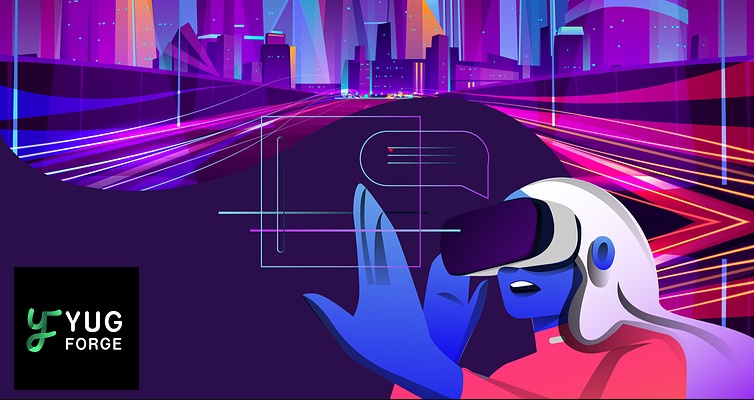Introduction to Augmented Reality Frameworks
Augmented Reality (AR) is a rapidly evolving technology that seamlessly integrates digital elements into our physical environment, transforming our perception of reality. At its core, AR development platfrom relies on specialized frameworks designed to empower developers in creating immersive AR experiences. These Augmented Reality Frameworks serve as the foundation for overlaying digital content onto our physical surroundings, accessible through smartphones, AR glasses, or other devices.
These frameworks, such as ARKit (iOS) and ARCore (Android), provide essential features like motion tracking, environmental understanding, and light estimation. They unlock diverse opportunities across industries, spanning gaming, education, healthcare, and architecture. As AR continues its upward trajectory, a solid grasp of these frameworks becomes imperative for developers and businesses seeking to harness the boundless potential of augmented reality technology. In this article, we delve deeper into these frameworks and their pivotal role in shaping the AR landscape.
- Types of Augmented Reality Frameworks
Augmented Reality (AR) is swiftly redefining our interaction with the digital realm, thanks to a variety of frameworks that developers leverage to craft immersive AR experiences. Here are prominent categories of Augmented Reality frameworks:
- Marker-Based AR: These frameworks utilize predefined markers or images as triggers for AR content. Once a device's camera identifies these markers, it overlays digital content onto them.
- Markerless AR: Also referred to as Location-Based or Positional AR, these frameworks depend on GPS, compass, and sensors to position digital objects in the real world without markers.
- Projection-Based AR: This type directly projects digital content onto physical objects, forging interactive and dynamic AR experiences.
- Recognition-Based AR: These frameworks recognize and track objects or scenes, facilitating more natural interactions and animations within the AR environment.
- SLAM-Based AR: Simultaneous Localization and Mapping (SLAM) frameworks empower devices to grasp and map their surroundings in real-time, ensuring lifelike AR interactions.
- Web-Based AR: Web AR frameworks leverage web browsers to deliver AR experiences without the need for dedicated apps, thus enhancing accessibility.
- Smart Glasses AR: Tailored for wearables like AR glasses, these frameworks furnish hands-free, context-aware AR experiences.
Familiarity with these AR frameworks aids developers in selecting the most suitable tools to craft captivating and functional augmented reality applications.
- Key Elements of Augmented Reality Frameworks
Augmented Reality (AR) frameworks serve as the cornerstone of immersive digital experiences. To appreciate their essence, let's delve into their core components.
- Sensors and Input: AR frameworks harness a diverse range of sensors such as cameras, GPS, accelerometers, and gyroscopes to collect real-world data.
- Computer Vision: Computer vision algorithms process sensor data to track objects, identify markers, and comprehend the user's environment.
- Rendering Engine: AR frameworks incorporate rendering engines to seamlessly superimpose digital content into the real world while preserving perspective and lighting.
- Tracking: Precise tracking of objects and user movements is indispensable for responsive and natural-feeling AR interactions.
- Content Management: Effective management and updates of AR content ensure a dynamic and engaging user experience.
- Interaction Models: AR frameworks offer diverse interaction methods, from touch gestures to voice commands, enhancing user engagement.
- Cross-Platform Compatibility: Compatibility across devices and platforms guarantees broad accessibility.
Comprehending these elements is pivotal for developers and designers aiming to create compelling and functional augmented reality experiences.
- Trends in Augmented Reality Frameworks
Augmented Reality (AR) is in a state of constant evolution, necessitating developers and businesses to stay informed about the latest trends in AR frameworks. Recent years have witnessed a surge in AR development tools and platforms that are reshaping our interaction with the digital world.
One prominent trend is the ascent of AR cloud solutions, enabling persistent and shared AR experiences across devices. This fosters collaboration and enhances user engagement. Additionally, the integration of machine learning within AR frameworks is becoming increasingly prevalent, allowing for more precise object recognition and tracking.
Lastly, AR frameworks are becoming more accessible through cross-platform compatibility, simplifying the creation of AR applications that seamlessly operate across various devices and operating systems. As AR technology continues to mature, these trends will significantly influence the future of augmented reality development.
- Practical Applications and Case Studies
Practical Applications and Case Studies play a pivotal role in bridging the gap between theory and real-world scenarios. They offer valuable insights and tangible examples that showcase the effectiveness of concepts and strategies across various fields. Whether in business, healthcare, technology, or education, case studies illustrate how theories translate into practical solutions. These real-life success stories not only inform but also inspire, providing a roadmap for others to navigate similar challenges. By delving into practical applications and examining case studies, individuals and organizations gain a deeper understanding of what works, enabling them to make informed decisions and drive positive change in their respective domains.


No comments yet